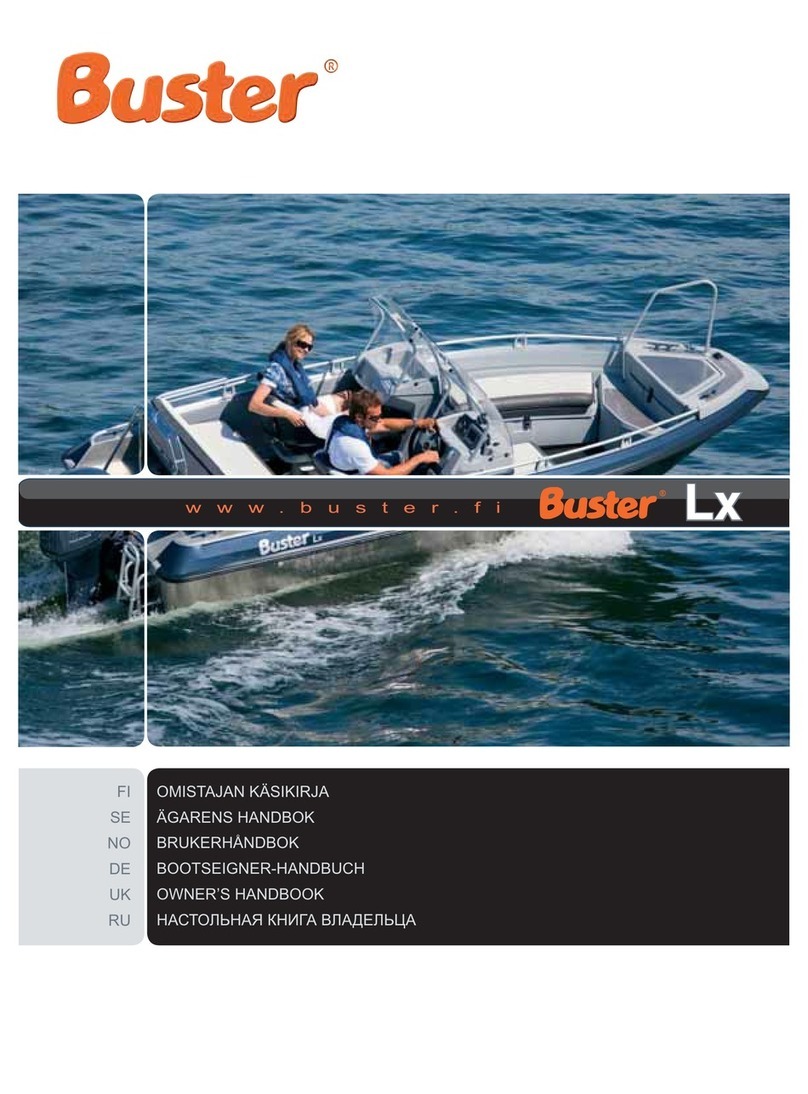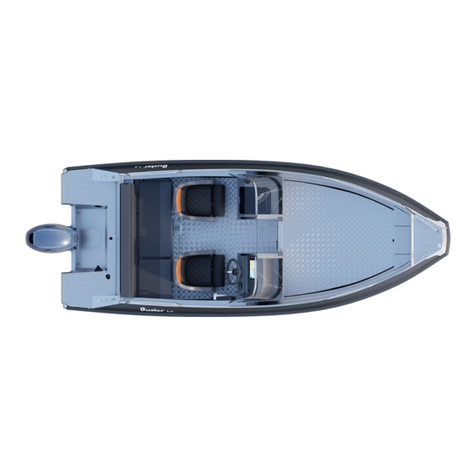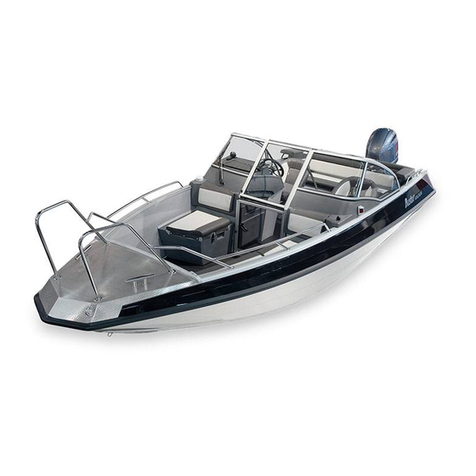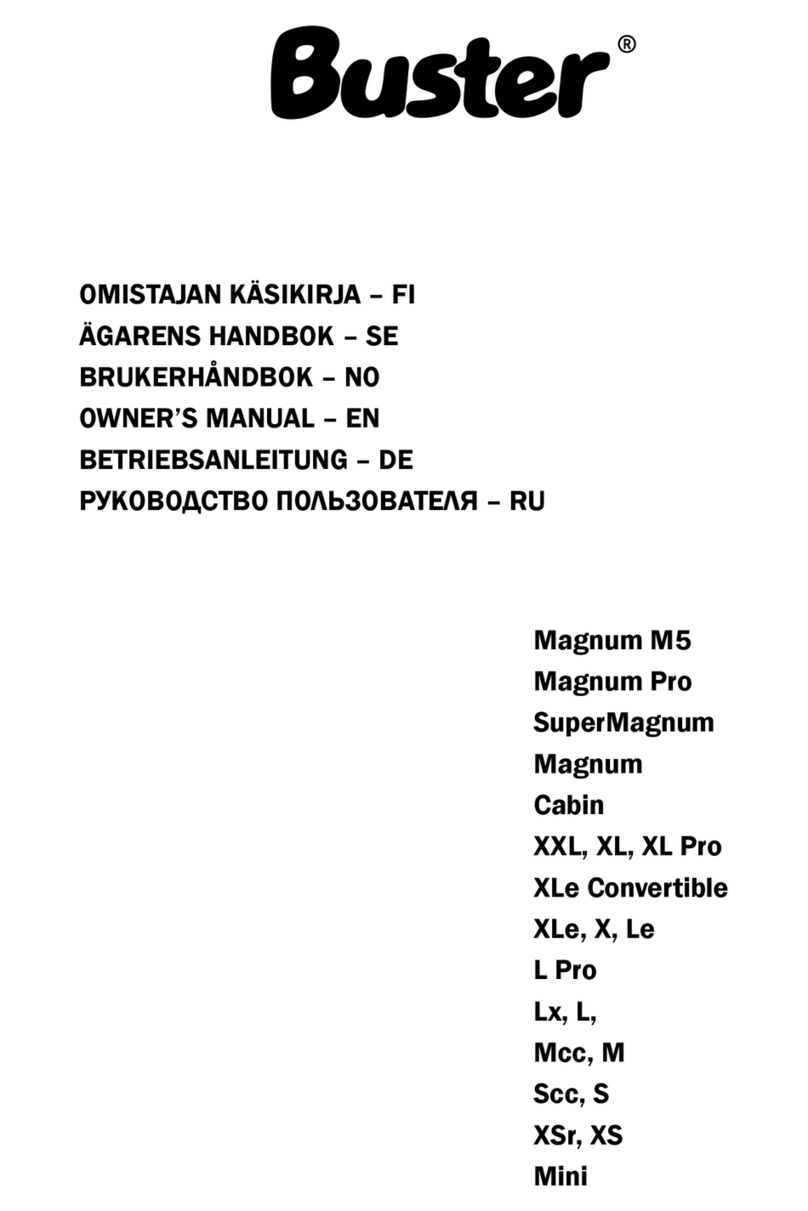ENGLISH
4
Contents
1 General..................................................................................................8
2 Definitions..............................................................................................8
3 Warranty................................................................................................9
4 Before launching ...................................................................................9
4.1 Registration ..................................................................................9
4.2 Insurance .....................................................................................9
4.3 Training ......................................................................................10
5
Boat characteristics and operation...........................................................10
5.1 General ......................................................................................10
5.2 Basic information about the Buster X.........................................10
5.3 Recommended maximum number ofpeople on board ...............12
5.4 Loading ......................................................................................14
5.5 Engine and propeller ..................................................................14
5.6 Preventing water getting on board, and stability ........................15
5.6.1 Hull and deck openings...............................................15
5.6.2 Bilge pumps and drainage...........................................17
5.6.3 Stability and buoyancy ................................................18
5.7 Prevention of fire and explosions ...............................................18
5.7.1 Engines and fuel systems ...........................................18
5.7.2 Fire extinguishing and fire prevention .........................20
5.8 Electrical system ........................................................................21
5.9 Control characteristics................................................................25
5.9.1 Driving at high speeds.................................................25
5.9.2 Dead-man’s grip .........................................................27
5.9.3 Visibility from the steering position..............................27
5.10 Good seamanship – other recommendations and instructions... 28
5.10.1 How to avoid falling overboard and procedures for
getting back on board..................................................28
5.10.2 Securing loose equipment...........................................28
5.10.3 Respect for the environment .......................................28
5.10.4 Anchoring, mooring and towing...................................30
5.10.5 Trailer towing...............................................................32
5.10.6 Navigation ...................................................................33
6 Service, repairs and winter storage.....................................................34





































